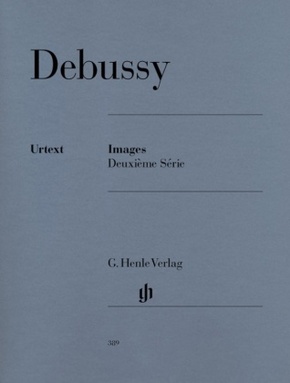Claude Debussy - Images 2e série - Besetzung: Klavier zu zwei Händen
| Verlag | Henle |
| Auflage | 2000 |
| Seiten | 36 |
| Format | 23,5 x 31,0 x 0,2 cm |
| Gewicht | 178 g |
| Reihe | G. Henle Urtext-Ausgabe |
| ISBN-13 | 9790201803890 |
| Bestell-Nr | 13597265BA |
Der dreisätzige Zyklus, Ende 1907 komponiert und Anfang 1908 erschienen, bringt eine auffällige Neuerung. Debussy notiert den hochdifferenzierten und bis in die extremen Lagen aufgefächerten Klaviersatz durchgehend auf drei Systemen. Der erste Satz (Cloches à travers les feuilles) mag an ein Totengeläut erinnern, der zweite (Et la lune descend sur le temple qui fut) ein fernes Indien oder auch China beschwören; zu dem dritten (Poissons d'or) wurde Debussy durch eine Lackarbeit mit Goldfischen inspiriert, die in seinem Arbeitszimmer hing. Der Widmungsträger des dritten Satzes, Ricardo Viñes, brachte den Zyklus zur Uraufführung.
Inhaltsverzeichnis:
Images 2e série Cloches à travers les feuilles Et la lune descend sur le temple qui fut Poissons d'or
The cycle with three movements, composed at the end of 1907 and published at the beginning of the next year, contains a singular innovation: Debussy notated the highly differentiated piano part that goes into the extreme registers on three staves. The first movement (Cloches à travers les feuilles) is reminiscent of a deathknell, the second (Et la lune descend sur le temple qui fut) conjures up far-off India or also China; and as for the third movement (Poissons d'or) Debussy was inspired by an enamel painting of goldfish in his study. The dedicatee of the third movement, Ricardo Viñes, gave the first performance of the cycle.
Inhaltsverzeichnis:
Images 2e série Cloches à travers les feuilles Et la lune descend sur le temple qui fut Poissons d'or

